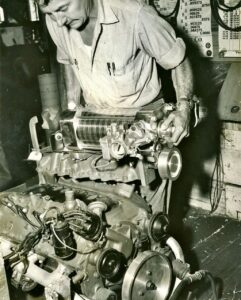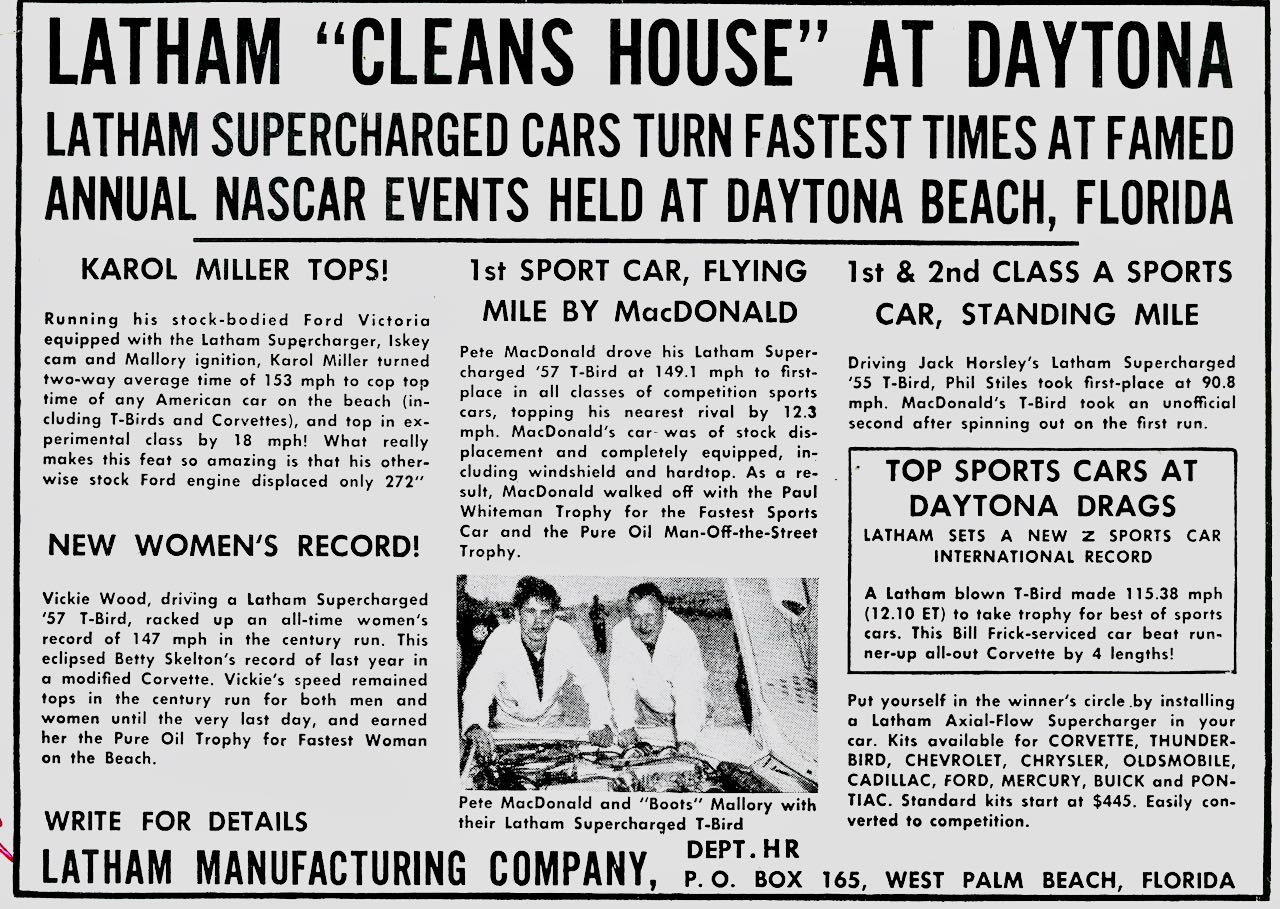More like a positive-displacement Roots-type GMC blower than a Centrifugal McCulloch, the LATHAM AXIAL-FLOW SUPERCHARGER is a unique, beautifully machined, low-profile alloy ‘turbine’ with multiple sidedraft carbs.


My first encounter with a LATHAM AXIAL-FLOW SUPERCHARGER was in the early 1960s when I was working on a story about a very special E-Type Jaguar being built by Al Garz in his sophisticated restoration/speed shop in Brooklyn, NY. The Jag was powered by a Latham-supercharged small-block Corvette engine and the story was for CARS Magazine.
This was long before engine conversion kits were available for putting American V-8s in Jaguars and everything about this car – from engine detailing to the complex chassis modifications – was concours quality. The car was being built for a wealthy sports car enthusiast living in Oyster Bay, NY. Since I knew little about the forced induction system at the time, I contacted Norman Latham at his West Palm Beach, FL facility. He sent me literature, photos of Latham installations on Fords, and Briggs Cunningham’s customized and modified ’62 Pontiac Grand Prix, photo below, powered by a 421-inch engine topped by an Axial-Flow with Webers. In addition to an impressive racing history, Cunningham built his own Cadillac & Chrysler Hemi-powered sports cars in West Palm Beach before Latham started supercharger production. Latham Supercharger Kits were available for popular OHV V-8 engines as well as earlier Ford Flatheads. Depending upon engine displacement and application, Kits utilized up to four sidedraft carburetors.


Hagerty.com’s Kyle Smith tracks the history of the unique LATHAM AXIAL-FLOW SUPERCHARGER in A Turbine for Your Hot Rod? Latham Says Yes.
Supercharging has interesting roots (pun intended) in the automotive world. The idea of pressure-feeding air into an engine for a car is only a few years younger than the automobile itself. The first production examples were available on Mercedes models in 1922, and it has only become more popular since. As with many examples of technology, there were some interesting attempts at supercharging that didn’t last and ended up on the side of the long road that is automotive history. One such example is the LATHAM AXIAL-FLOW SUPERCHARGER.
Supercharging an engine relies on the crankshaft to drive a compressor that forces air into the intake, effectively increasing the volumetric efficiency of the engine by cramming more air into the cylinders than it would pull in on its own during the vacuum created by the intake stroke. The most common forms of superchargers are centrifugal, Roots, screw, and scroll. Before the market settled on the common types we’re familiar with today, there were several efforts to create the next best thing. Norman Latham of West Palm Beach, Fl, hoped his new product would be a must-have performance bolt-on.
Latham’s idea was to create an axial supercharger. This is essentially a turbine, where the supercharger housing contains “fans” that can create positive manifold pressure. Latham’s design went into production in 1956 and was sold until 1965. It was radically different than a Roots or Centrifugal supercharger, yet also combined a few of the better parts of each. A Centrifugal supercharger was a bear to tune 70 years ago because carburetors were still the most popular way of mixing the air and fuel entering an engine.
Check out this video, LATHAM Axial Flow Supercharger – Fascinating History of a Short-Lived Design @ https://www.youtube.com/watch?v=QcXJPWqO4Bg&t=11s
